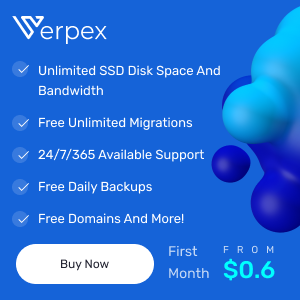Introduction: Future of Education
The Educational Platform Ecosystem
Future of Education has seen a monumental shift towards digital platforms. The availability of diverse educational tools and platforms has transformed how we learn, teach, and engage with educational content. In this comprehensive guide, we will delve into the educational platform landscape, reviewing, comparing, and analyzing key players in various categories. We will also consider pricing models, user feedback, and real-world applications to help you make informed decisions.
The Importance of Choosing the Right Platform
The choice of an educational platform is crucial, whether you are an educator seeking to enhance your teaching methods or a student looking to optimize your learning experience. This guide aims to provide you with an in-depth understanding of the available options, enabling you to select the platforms that best align with your educational goals and budget.
Learning Management Systems (LMS): Future of Education
An Overview of LMS
Learning Management Systems (LMS) have become the cornerstone of online education. They offer a centralized hub for educators to manage and deliver courses efficiently. This section provides an overview of LMS, outlining their core features and benefits.
Top LMS Providers
We will review and compare some of the most prominent LMS providers, including Moodle, Canvas, and Blackboard. We will assess their strengths, weaknesses, and suitability for various educational contexts.
Feature Comparison
An in-depth examination of LMS features, such as content management, assessment tools, and analytics, will help educators and institutions select the platform that aligns with their specific needs.
Pricing Models
LMS providers offer various pricing models, from open-source solutions to subscription-based services. We will break down the costs associated with different LMS options, ensuring that you can make cost-effective decisions.
Case Studies
Real-world examples of educational institutions and businesses successfully implementing LMS will provide insights into the practical applications and benefits of these systems
Online Course Marketplaces:
Introduction to Course Marketplaces
Online course marketplaces have revolutionized access to education by offering a vast array of courses on diverse subjects. In this section, we will introduce you to the concept of online course marketplaces and their impact on modern learning.
Leading Course Marketplaces
We will explore popular online course marketplaces like Coursera, edX, and Udemy. Each platform offers unique features and course selections, catering to a wide range of learners.
Course Quality and Selection
A crucial factor in choosing a course marketplace is the quality and variety of courses available. We will assess the depth and breadth of course offerings on these platforms.
Cost Analysis
We will conduct a cost analysis of courses across different platforms, helping learners identify affordable options that align with their educational objectives.
User Reviews
User feedback provides valuable insights into the learner experience on course marketplaces. We will share user reviews and testimonials to guide your decision-making process.
Video Conferencing Tools:
The Role of Video Conferencing in Education
Video conferencing tools have become essential for remote learning and collaboration. This section highlights the significance of video conferencing in the field of education.
Popular Video Conferencing Platforms
We will review and compare widely used video conferencing platforms like Zoom, Microsoft Teams, and Google Meet. A feature analysis will help educators and students select the most suitable platform for their needs.
Feature Analysis
An in-depth exploration of features such as screen sharing, breakout rooms, and recording options will provide a comprehensive understanding of each platform's capabilities.
Cost Comparison
Video conferencing tools offer a range of pricing models, from free plans to enterprise subscriptions. We will break down the costs associated with different platforms, ensuring you can find a solution that fits your budget.
Educational Use Cases
Real-world examples of educational institutions and businesses effectively using video conferencing will illustrate the diverse applications of these tools in the field of education.
Collaboration and Productivity Suites:
The Power of Collaboration in Education
Collaboration and productivity suites like Google Workspace and Microsoft 365 have transformed the way educators and students work together. This section emphasizes the role of collaboration in enhancing the learning experience.
Google Workspace vs. Microsoft 365
We will conduct a detailed comparison of these two major suites, highlighting their respective strengths, including document editing, cloud storage, and communication tools.
Features for Educators and Students
Educators and students have unique requirements when it comes to collaboration. We will explore how both Google Workspace and Microsoft 365 cater to these specific needs.
Pricing Structures
Understanding the pricing structures of these suites is essential for educational institutions and individuals. We will provide a breakdown of costs, including free vs. paid plans.
Integration Capabilities
The ability to integrate with other educational tools is crucial. We will examine how Google Workspace and Microsoft 365 facilitate integration with popular educational platforms.
Language Learning Apps:
Language Learning in the Digital Age
Digital language learning apps have gained popularity for their convenience and effectiveness. This section discusses the advantages of learning languages through apps.
Duolingo vs. Rosetta Stone vs. Babbel
We will compare three leading language learning apps: Duolingo, Rosetta Stone, and Babbel. Their unique teaching methods and user experiences will be evaluated.
Gamification and Engagement
Gamification is a key feature of language learning apps. We will explore how these apps leverage gamified elements to keep learners engaged and motivated.
Subscription Models
Language learning apps offer both free and premium subscription options. We will analyze the value offered by paid subscriptions and assess their affordability.
Learner Success Stories
Real-life success stories of individuals who achieved fluency through language learning apps will inspire language enthusiasts to embark on their own language journeys.
Coding and STEM Education Tools:
The Rise of STEM Education
STEM (Science, Technology, Engineering, and Mathematics) education is crucial for preparing future innovators. This section emphasizes the importance of STEM education tools.
Key Players in Coding Education
We will review prominent coding education platforms like Codecademy, Khan Academy, and edX. Their course offerings and teaching methodologies will be compared.
Interactive Learning Environments
Coding and STEM education require hands-on learning. We will assess how these platforms provide interactive environments for learners to apply their skills.
Cost Efficiency and Accessibility
Future of Education; Affordability and accessibility are essential factors in STEM education. We will examine the cost structures and availability of free resources.
Student Achievement Data
Data on student achievements and outcomes will provide insights into the effectiveness of these platforms in preparing learners for STEM careers.
Learning Management Systems (LMS):
The Evolving Landscape of LMS
Learning Management Systems have evolved into comprehensive educational platforms. This section delves into the changing landscape of LMS in education.
Moodle vs. Canvas vs. Blackboard
We will conduct an in-depth comparison of widely used LMS like Moodle, Canvas, and Blackboard. Their adaptability, scalability, and user-friendliness will be assessed.
Customization and Course Creation
Educators often require flexibility in course creation. We will explore how these LMS empower instructors to design and deliver courses that align with their teaching objectives.
Budget Considerations
Budget constraints are common in educational institutions. We will analyze the cost structures and licensing options of these LMS to help educators make informed decisions.
Student Engagement and Analytics
Tracking student engagement and performance is essential. We will investigate the analytics and reporting features of these platforms for educators to monitor student progress effectively.
Online Tutoring and Homework Help Services:
The Role of Online Tutoring
Online tutoring services have become invaluable for students seeking additional support. This section discusses how these services complement traditional education.
Khan Academy vs. Chegg vs. Tutor.com
We will compare three leading online tutoring platforms: Khan Academy, Chegg, and Tutor.com. Their tutor availability, subject coverage, and pricing models will be scrutinized.
One-on-One vs. Group Tutoring
Different students have different learning preferences. We will explore how these platforms cater to both one-on-one and group tutoring needs.
Subscription Plans vs. Pay-as-You-Go
Online tutoring services offer subscription plans and pay-as-you-go options. We will evaluate the pros and cons of each pricing model.
Student Success Stories
Testimonials from students who achieved academic success with the help of online tutoring will underscore the effectiveness of these services.
Virtual Reality (VR) in Education: Future of Education
The Promise of Virtual Reality
Virtual Reality has the potential to revolutionize education by creating immersive learning experiences. This section explores the promise of VR in classrooms.
Oculus vs. HTC Vive vs. PlayStation VR
We will compare popular VR headsets like Oculus, HTC Vive, and PlayStation VR in terms of educational applications, content availability, and affordability.
Educational VR Content
Content is key to the success of VR in education. We will investigate the availability of educational VR experiences and their impact on student engagement.
Implementation Challenges
Integrating VR into traditional education comes with challenges. We will discuss common hurdles and how educators and institutions can overcome them.
Future Prospects
The future of VR in education holds exciting possibilities. We will explore emerging trends and potential developments in this field.
Conclusion: Future of Education
Choosing the Right Educational Tools
Selecting the right educational tools and platforms is crucial for effective learning and teaching. This concluding section summarizes key takeaways and offers guidance on making informed decisions.
Your Educational Journey
Education is a lifelong journey, and the tools and platforms available today can significantly enhance this experience. Embracing technology in education opens up endless opportunities for both educators and learners.
Empowering the Future
By leveraging these educational tools and platforms, we empower future generations with the knowledge and skills they need to excel in an ever-evolving world.




















.png)



0 Comments